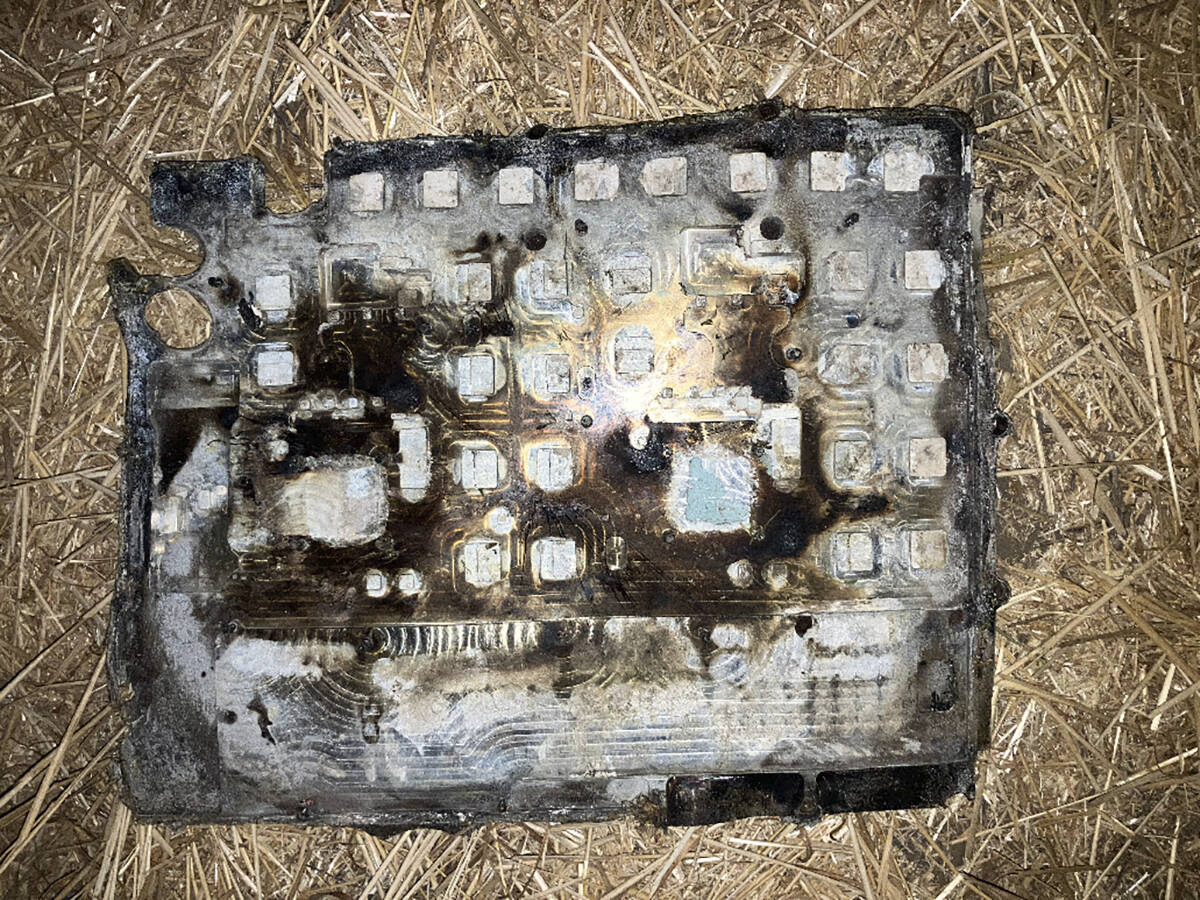Alberta Broadband Strategy commits to achieving internet connectivity for all provincial residents by the end of 2026-27
Up to $70.6 million worth of projects have been approved that will bring high-speed internet to more than 10,400 households in more than 50 rural and Indigenous communities across Alberta.
It is the first allocation of up to $780 million in combined provincial and federal funding set aside earlier this year to ensure all rural households in Alberta will have broadband access, said Service Alberta Minister Nate Glubish.
“And now as we work together to roll out these funds to the best and the most exciting projects across the province, we expect to unlock hundreds of millions of private sector dollars, bringing the total funding to over $1 billion,” he told a telephone news conference Sept. 23.
Read Also

Farmers asked to keep an eye out for space junk
Farmers and landowners east of Saskatoon are asked to watch for possible debris in their fields after the re-entry of a satellite in late September.
Broadband is crucial to the development of everything from precision agriculture to autonomous farm equipment, said Glubish during an interview. It will also improve rural access to services such as human health care and livestock veterinary medicine by providing them via high-speed internet, he said.
Connectivity for farmers and ranchers is “going to be really important for the next generation of economic growth and diversification for our province, and it’s going to be critically important as Alberta seeks to play a role in feeding a growing global population,” he said.
The announcement Sept. 23, which included federal Minister of Rural Economic Development Gudie Hutchings, followed the unveiling of the Alberta Broadband Fund on Sept. 20. The provincial government set aside $36 million out of its half of the $780 million to help communities that have been unable to access the federal Universal Broadband Fund (UBF) for rural and remote areas.
Some communities had trouble applying to the UBF in terms of timing because the program is oversubscribed, while others were ineligible because portions of their projects had already been started, said Paul McLauchlin, president of the Rural Municipalities of Alberta.
“A lot of folks were complaining they weren’t able to get into it for multiple reasons, and this affords an opportunity, I think, to allow them to actually get access to these funds to do what they want to do.”
When asked if changes need to be made to the UBF to make it easier to access, Hutchings said the program is on track to achieve a federal goal of ensuring 98 percent of Canadians are connected to broadband by 2026.
“After that, we’ll look at what’s connected, but I can tell you right now we do have a plan to get all of Canada connected by 2030, and then who knows, maybe it’s scalable. Maybe it’s how do we upgrade service? Maybe it’s cell, maybe it’s other things, but right now, the Universal Broadband Fund is working.”
McLauchlin said a further obstacle is the ongoing disruption to global supply chains sparked by the COVID-19 pandemic. The ability to access equipment and products such as fibre optic cable “has been very limited, and so it has carried some terrible frustrations for a lot of folks as well,” he said.
The Alberta Broadband Strategy commits provincial officials to achieve broadband connectivity for everyone in the province by the end of the fiscal year for 2026-27.
“I think it might be a little too early to say right now whether we have 100 percent certainty on that, but I think it’s a credible, realistic plan…,” said Glubish during the interview.
“And if there are challenges that come up that we haven’t anticipated, we’ll work together with our partners to overcome (them).”
Alberta is second only to Saskatchewan in the amount of its farmland, which ranges from the Rocky Mountains to the prairies of southern Alberta.
“When it comes to the individual needs of providing precision agriculture connectivity across an entire farming operation, that’s a lot more complicated than just getting every household connected,” said Glubish.
However, the provincial strategy aims to create infrastructure for rural broadband that will make further enhancements possible, including scalability as new data-hungry technologies and innovations arise, he said.
“And then we can reassess and look at how we build from there.”
A federal statement said the Alberta communities that will receive up to $70.6 million in initial funding for broadband include Arcadia (Sucker Creek), Bay Tree, Big Horn 144A (7264), Bigstone Cree Nation, Bigstone Cree (Wabasca 166), Bigstone Cree (Wabasca 166B), Bigstone Cree (Wabasca 166C), Bigstone Cree (Wabasca 166D), Blueberry Mountain, Bluffton, Bonanza, Brant, Brocket (Piikani Nation), Carmangay, Cayley, Champion, Cluny, Driftpile, Enilda, Ensign, and Faust.
The others are Gift Lake, Gleichen, Gordondale, Guy, Herronton, High Prairie, Horse Lake First Nation, Jean Cote, Joussard, Kinuso, Kirkcaldy, Little Bow Resort, Mossleigh, Namaka, Queenstown, Rainbow Lake, Rimbey, Salt Prairie, Shouldice, Siksika Nation, Sunset House, Swan River First Nation, Travers, Tsuut’ina Nation, Viewmar Estates, Vulcan, Wabasca-Desmarais, Wanham, Watino, Webster, Whitburn and Woking.


















